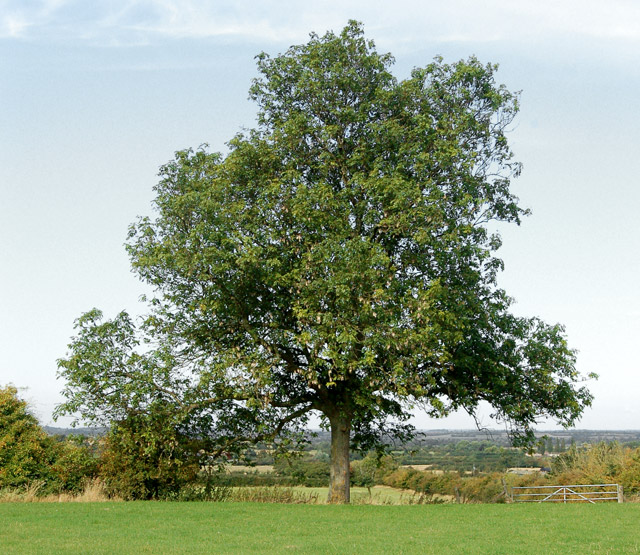Government Grants
Business Grants
Home Owner Programs
Federal Programs
About Us
PC-24-03: Characterization of Water Column Habitats to Understand Potential Impacts from Deepwater Energy and Mineral Development
Although the pelagic ocean is the largest ecosystem on earth, it remains poorly characterized and understood due to its vast size and three-dimensional, highly dynamic nature (e.g., Perelman et al.
2021).
Most oceanographic programs concentrate upon the surface ocean because plankton and larval fish are concentrated there.
Very little of the water column below the epipelagic (0–200 m) has been described in any detail (Netburn 2018).
However, we know that important processes occur throughout that water column, such as the biological pump (Passow and Carlson 2012), diel vertical migration (Sutton 2013, Kelly et al.
2019), other mechanisms for connectivity (Sutton 2013), and food web dynamics (Choy et al.
2017).
As industries move to deeper waters of the OCS, it is imperative to learn more about potential impacts to these habitats, specifically sites of commercial interest.
Water column information can be collected by traditional oceanographic equipment, especially when supplemented by new techniques and technology.
In addition to physical and chemical profiles of the water column, Conductivity-Temperature-Depth (CTD) rosette casts can collect water samples to evaluate the biological community through eDNA sampling.
Cameras can also be integrated onto CTD rosettes to help image these pelagic environments for which the deeper habitats are rarely visualized.
This study is intended to fund the integration of a complementary water column component into planned marine mineral and offshore wind-related research cruises in locations of potential commercial interest.
There are two cost-effective near-term opportunities for at-sea data collection to support the proposed study objectives in the fall of 202 4. One is a planned August 26 – September 16 NOAA-led benthic habitats AUV survey on NOAA Ship Bell M.
Shimada out of Newport, Oregon that is focused on areas of interest for offshore wind in northern California and southern Oregon.
The second is a September 10 – October 07 USGS-led multibeam and box core cruise on the R/V Kilo Moana out of Honolulu, Hawai’i that will assess the abundance and composition of abyssal manganese nodules at the southern extreme of the OCS south of Hawai’i.
There appear to be several substantive outyear opportunities in 2025 and beyond to add a mid-water component to anticipated NOAA cruises in areas of interest for both offshore wind and critical minerals.
BOEM will work with the award recipient to secure sample collection opportunities on select outyear opportunities.
The scope of water column operations on each cruise will be designed in consultation with cruise Chief Scientists to address the highest priority mid-water environmental information needs while taking into account any pre-existing science plans and available planning horizon.
For example, optical sensors (e.g., high-definition cameras, shadowgraphs) could be deployed when primary science operations are done for the day, or a smaller system could be integrated onto a CTD rosette to simultaneously collect imagery without needing dedicated wire-time.
Data from the at-sea efforts will contribute significantly to baseline knowledge of pelagic systems that are highly dynamic and difficult to study.
With industries moving into deeper waters further offshore, these water column data are necessary to understand environmental conditions and associated natural variation.
For example, baseline environmental data can improve our understanding of environmental risks and potential impacts of floating offshore wind, such as changes in organism behavior and displacement (Maxwell et al.
2022).
Additionally, current seabed mining technologies are expected to produce sediment plumes with unknown environmental impacts (Gollner et al.
2017, Gillard et al.
2019).
Baseline data for these water column habitats are thus critical for identifying the resources that may be impacted and assessing what those impacts are likely to be.The proposed study will address the following objectives.Develop species inventories throughout the water column in areas of potential commercial interest for floating offshore wind and critical minerals, particularly abyssal manganese nodulesAssess other recent/ongoing scientific programs that can provide relevant data and meaningfully support the study objectives [e.g., California Current Ecosystem (CCE) Long-Term Ecological Research (LTER)] Explain the regional distribution of organisms relative to the physical and chemical oceanographic conditions Provide recommendations for a cost-effective and high-value sampling and sensor package or module(s) that can be easily integrated as a mid-water add-on to future research cruises.
Some of the key questions to be addressed are:What is the pelagic community structure in current and potential regions of interest for offshore wind development and abyssal nodules in the Pacific OCS?What are the physical and chemical drivers in each region, and how do they relate to the pelagic community structure?What is a relatively simple and cost-effective standard midwater science component ‘add-on’ that could provide high value to future deepwater Pacific research efforts?
2021).
Most oceanographic programs concentrate upon the surface ocean because plankton and larval fish are concentrated there.
Very little of the water column below the epipelagic (0–200 m) has been described in any detail (Netburn 2018).
However, we know that important processes occur throughout that water column, such as the biological pump (Passow and Carlson 2012), diel vertical migration (Sutton 2013, Kelly et al.
2019), other mechanisms for connectivity (Sutton 2013), and food web dynamics (Choy et al.
2017).
As industries move to deeper waters of the OCS, it is imperative to learn more about potential impacts to these habitats, specifically sites of commercial interest.
Water column information can be collected by traditional oceanographic equipment, especially when supplemented by new techniques and technology.
In addition to physical and chemical profiles of the water column, Conductivity-Temperature-Depth (CTD) rosette casts can collect water samples to evaluate the biological community through eDNA sampling.
Cameras can also be integrated onto CTD rosettes to help image these pelagic environments for which the deeper habitats are rarely visualized.
This study is intended to fund the integration of a complementary water column component into planned marine mineral and offshore wind-related research cruises in locations of potential commercial interest.
There are two cost-effective near-term opportunities for at-sea data collection to support the proposed study objectives in the fall of 202 4. One is a planned August 26 – September 16 NOAA-led benthic habitats AUV survey on NOAA Ship Bell M.
Shimada out of Newport, Oregon that is focused on areas of interest for offshore wind in northern California and southern Oregon.
The second is a September 10 – October 07 USGS-led multibeam and box core cruise on the R/V Kilo Moana out of Honolulu, Hawai’i that will assess the abundance and composition of abyssal manganese nodules at the southern extreme of the OCS south of Hawai’i.
There appear to be several substantive outyear opportunities in 2025 and beyond to add a mid-water component to anticipated NOAA cruises in areas of interest for both offshore wind and critical minerals.
BOEM will work with the award recipient to secure sample collection opportunities on select outyear opportunities.
The scope of water column operations on each cruise will be designed in consultation with cruise Chief Scientists to address the highest priority mid-water environmental information needs while taking into account any pre-existing science plans and available planning horizon.
For example, optical sensors (e.g., high-definition cameras, shadowgraphs) could be deployed when primary science operations are done for the day, or a smaller system could be integrated onto a CTD rosette to simultaneously collect imagery without needing dedicated wire-time.
Data from the at-sea efforts will contribute significantly to baseline knowledge of pelagic systems that are highly dynamic and difficult to study.
With industries moving into deeper waters further offshore, these water column data are necessary to understand environmental conditions and associated natural variation.
For example, baseline environmental data can improve our understanding of environmental risks and potential impacts of floating offshore wind, such as changes in organism behavior and displacement (Maxwell et al.
2022).
Additionally, current seabed mining technologies are expected to produce sediment plumes with unknown environmental impacts (Gollner et al.
2017, Gillard et al.
2019).
Baseline data for these water column habitats are thus critical for identifying the resources that may be impacted and assessing what those impacts are likely to be.The proposed study will address the following objectives.Develop species inventories throughout the water column in areas of potential commercial interest for floating offshore wind and critical minerals, particularly abyssal manganese nodulesAssess other recent/ongoing scientific programs that can provide relevant data and meaningfully support the study objectives [e.g., California Current Ecosystem (CCE) Long-Term Ecological Research (LTER)] Explain the regional distribution of organisms relative to the physical and chemical oceanographic conditions Provide recommendations for a cost-effective and high-value sampling and sensor package or module(s) that can be easily integrated as a mid-water add-on to future research cruises.
Some of the key questions to be addressed are:What is the pelagic community structure in current and potential regions of interest for offshore wind development and abyssal nodules in the Pacific OCS?What are the physical and chemical drivers in each region, and how do they relate to the pelagic community structure?What is a relatively simple and cost-effective standard midwater science component ‘add-on’ that could provide high value to future deepwater Pacific research efforts?
Related Programs
Minerals Management Service (MMS) Environmental Studies Program (ESP)
Department of the Interior
Agency: Department of the Interior
Office: Bureau of Ocean Energy Management
Estimated Funding: $820,000
Office: Bureau of Ocean Energy Management
Estimated Funding: $820,000
Relevant Nonprofit Program Categories
Obtain Full Opportunity Text:
Click on Application tab above to download full announcement instructions and application package
Additional Information of Eligibility:
This study is a single source Cooperative Agreement between BOEM and the University of Alaska-Fairbanks as part of the Alaska Cooperative Ecosystem Studies Unit.This Program Announcement describes the specific projects that may be awarded to the universities or eligible groups identified.
All awards are premised on receipt of an acceptable proposal.
This is not an open solicitation for proposals.
This announcement is specifically to announce intent to undertake the following project(s):• Characterization of water column habitats to understand potential impacts from deepwater energy and mineral developmentOpen to:• University of Alaska-Fairbanks as a member of the Alaska Cooperative Ecosystem Studies Unit (CESU).The award will be a cooperative agreement (see Eligibility Information below).
This involves substantial involvement by BOEM scientists in various aspects of study development and/or study conduct.
Given that it is associated with the Alaska CESU, the overhead rate will be 17.5%.
Full Opportunity Web Address:
http://www.grants.gov
Contact:
Agency Email Description:
deja.bracey@bsee.gov
Agency Email:
Date Posted:
2024-04-18
Application Due Date:
Archive Date:
2011-07-03
Social Entrepreneurship
Spotlight
Celebrity Chef Jamie Oliver Backs Social Saturday

UK will be celebrating its first national celebration of social enterprises dubbed as Social Saturday. World famous celebrity chef Jamie Oliver, who founded the Fifteen restaurant chain.

